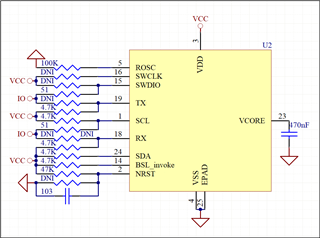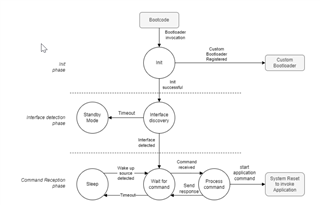Recently, we are supporting the programming of MSPM0L1306SRGER IC. According to the information provided by the original factory, the support is almost completed, but there are still some problems that need to be solved. Please also ask the person responsible for this IC from the original factory to help me solve the problem, thank you.
The SWD commands for programming, erasing, verifying and reading are all fine and can be executed normally, but I found that as long as the IC is powered on for about 10 seconds, the SWD will communicate abnormally, and the SWD will report ACK Wait and there will be no more response, even though I keep sending SWD signal after ACK Wait.
And no matter what the current command is, as long as it takes about 10 seconds, the communication will be abnormal directly.
The following file is the waveform record of abnormal communication when I use the logic analyzer to burn the SWD, and attach the hardware circuit plan together. Channel 3 is NRST.



